Aboriginal Rainforest Shield
Rainforest Shield: Traditional North East Aboriginal Artworks
Rainforest shields from North-eastern Queensland are highly regarded by collectors for their distinct painted designs. Among the most colorful of Aboriginal shields, these artworks are celebrated for their vibrant colors and intricate totemic designs. Each shield is an artwork in it’s own right and an expression of Aboriginal culture. These shields are richly painted with broad bands of white, yellow, red, brown, and black. The shields feature symbolic representations of various natural elements such as trees, fish, insects, leaves, fruit, and even initiation marks.
The painted shields of North-eastern Queensland are considered some of the most beautiful Aboriginal artworks, blending artistry with cultural significance. If you have one and want to sell it or just know what it is worth please feel free to send me an image and dimensions by email.
Aboriginal shields vary vastly in value from a thousand dollars to several tens of thousands of dollars depending on age, condition, design, collection history and other factors
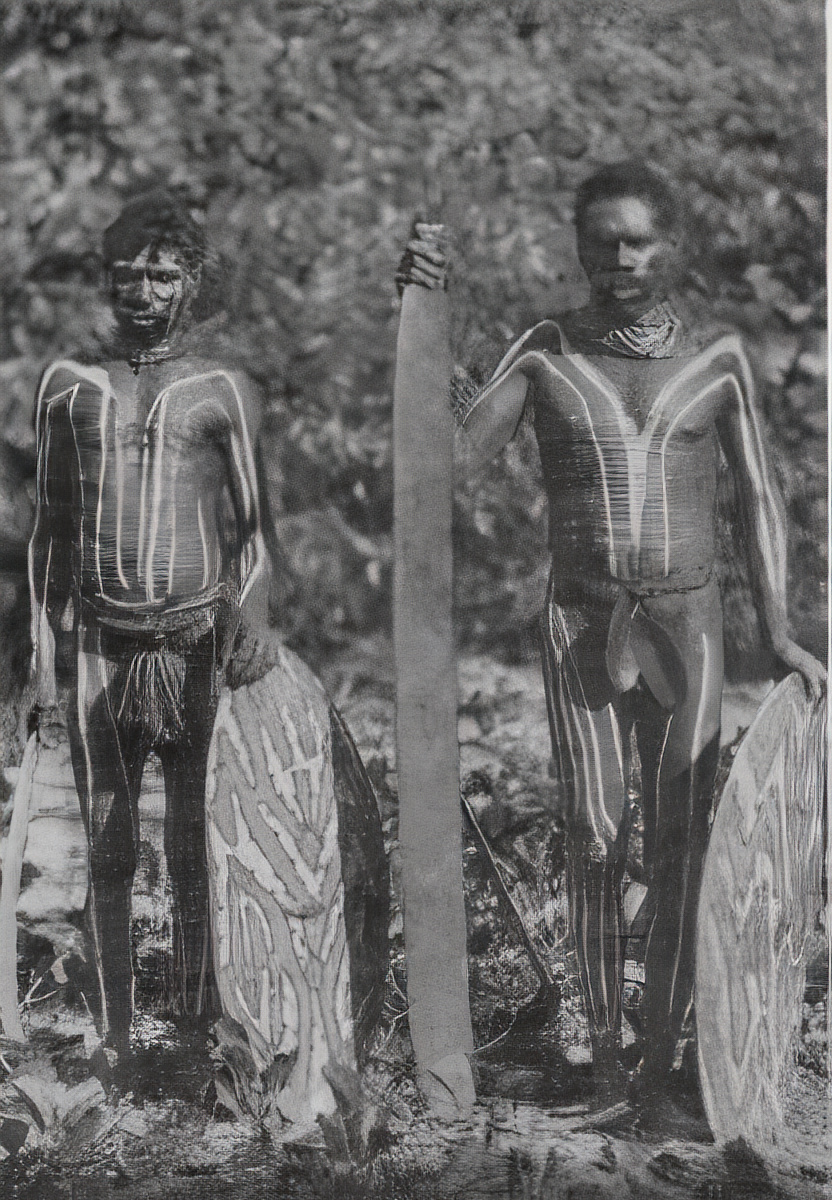
Above: Aboriginal people from Northern Queensland with shields and club
Ritual fighting and the Rainforest Shield
Interclan disputes in North East Queensland were often settled in one on one combat. Armed with a shield and a long boomerang shaped club the combatants would “take turns” at trying to hit the opponent while the other defended using the shield held above the head to deflect the strike. This style of settling disputes was much like challenging someone to a dual. Both antagonists would have a second with spears at the ready to ensure the opposition complied by the rules.This was a test not only of fighting skill but also craftsmanship of the shield and club. Old shields used in this manner almost always have extensive damage from being struck repeatedly by the opponents sword like large club.
Presumably shields were also used in defence from thrown spears but very few shields appear to have spear related damage.
Crafting a rainforest Shield
The materials used to create these shields are as unique as their designs. Traditionally, the shields were crafted from the buttress roots of rainforest fig trees (Ficus sp.), a material both durable and lightweight. These shields not only served as protection in battle but also featured a central ‘boss,’ which likely offered additional hand protection. Shield construction varied across regions, with differences in shape, handle design, and production processes. In all cases, the surface of the shield was smoothed in preparation for painting, ensuring a clean and suitable surface for the elaborate artwork.
Old shields that would have been smooth and flat when made often end up with rippled. The ripples follows the grain due to the buttress root drying and shrinking over the decades. Old shields are as a consequence seldom smooth and should have a weathered patina.
The paints used on these shields were made from natural pigments such as red and yellow ochre, white pipe clay, and charcoal.
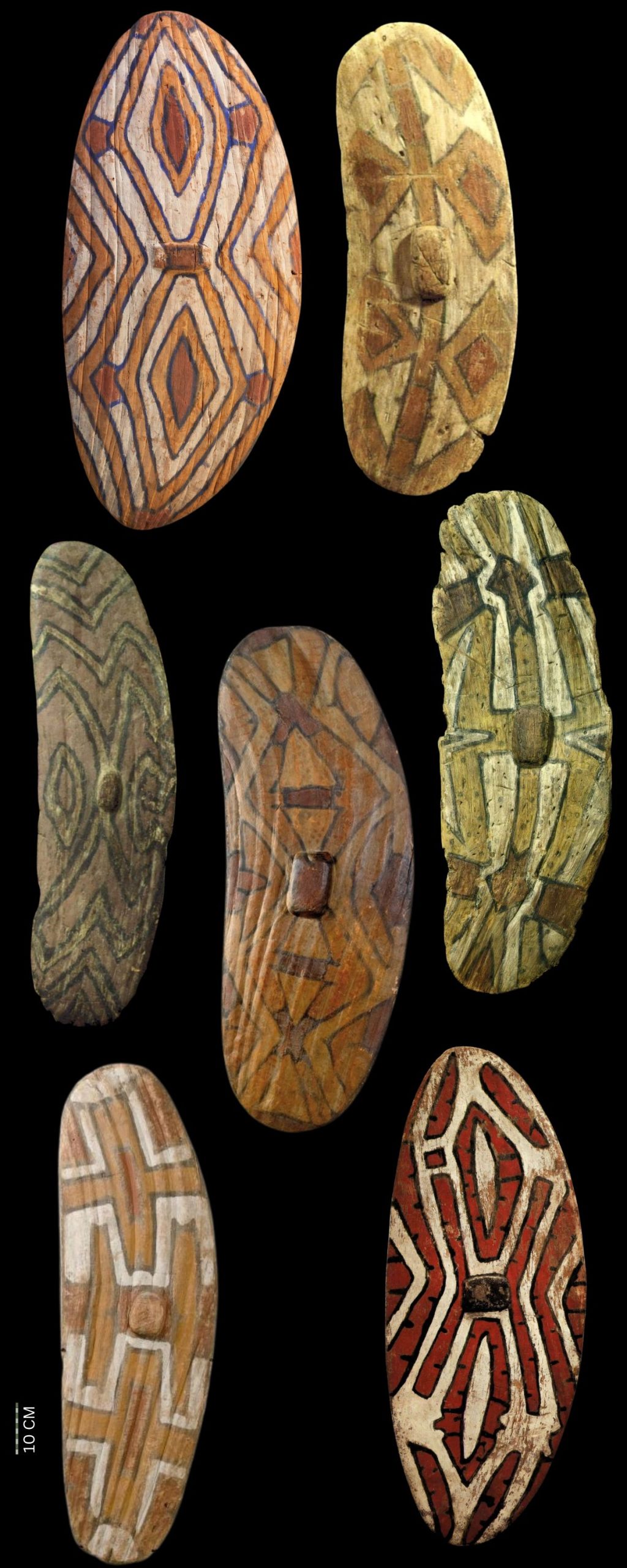
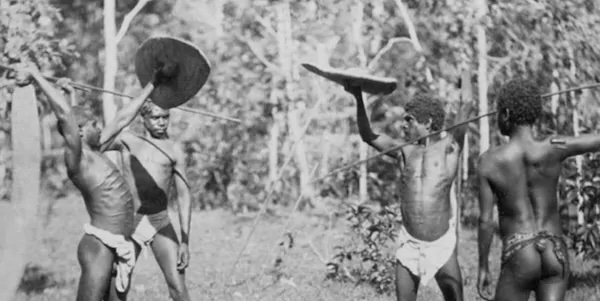
Left: Old image of a demonstration on how the shields were used. Please note the massive length of the boomerang shaped clubs being used. The two opponents holding the shields and massive clubs are flanked by seconds holding spears to ensure a fair fight.
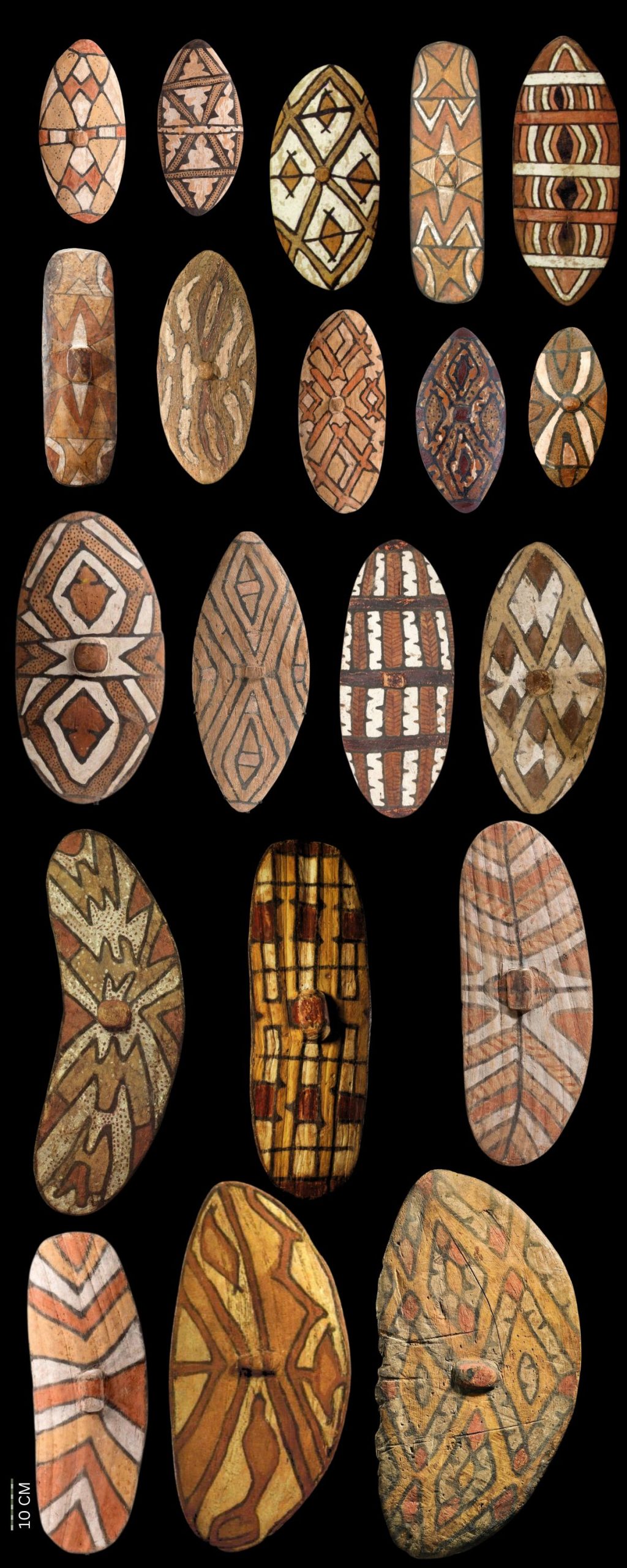
While some shields were painted with just two colors, others included up to four. Post-contact periods saw the introduction of new pigments, such as Ricketts blue, adding another layer of complexity to the artworks. Most shields feature motifs outlined in black, with additional dots or cross-hatching patterns, often created by mixing charcoal with human blood, as described by anthropologist Johnson.
The painted designs on the shield were believed to imbue it with powerful protective forces, and a shield was considered unfinished until it was adorned with paint. Earth pigments—red, yellow, ochre, and white—along with charcoal for black, were used to create these decorations. These powders were mixed with the artist’s own blood to act as a fixative. The use of human blood in the painting process raises intriguing and unanswered questions about the mystical power attributed to the designs. The artwork itself was applied using the trimmed stem of the Lawyer Cane plant as a brush.
Made for sale Vs Made for indigenous use
Old used shields are more collectable and more valuable than made for sale shields. Old shields tend to be significantly larger than later shields with most old shields being between 80 and 120cm. Later shields tend to be smaller ranging between 30 and 80cm. Often old shields will have a handle ridge that runs down the length of the shield for extra strength a feature missing in late shields.
The majority of shields made prior to 1920 were made for indigenous use and those after 1940 made for sale.
Both old and newer shields are collectable but an old shield often worth 10 times as much as a later made for sale shield.
Left: Telling an old Rainforest shield from a later made for sale shield is not always just about size.
For example on the bottom row two shields are about the same size but the middle one is smooth less weathered and has no damage compared to the one to the far older one on it’s right.
Symbolism in Shield Designs
The shields were integral to the lives of Aboriginal men, especially in ceremonial and combat contexts. Each shield was unique, with no two designs exactly alike, making them deeply personal to their owners. The designs themselves acted as markers of identity, distinguishing one individual or group from another. However, much of the context surrounding the shields’ production and the meanings behind specific motifs has been lost over time. Early European collectors did not document the meanings of these designs, leaving a gap in our understanding.
One of the few ethnographic interpretations of shield design comes from anthropologist Ursula McConnel, who documented how a young man would receive an unpainted shield as part of his initiation. Afterward, he would decide on the design, which represented his new totemic name and the ancestor associated with it. McConnel recorded various motifs, including symbols for boomerangs, fish, and even drops of blood from rituals. These designs connected the individual to their ancestral past and to the spiritual world, reflecting their cosmological beliefs.
For the Aboriginal people, shields were not merely tools for battle but represented a connection to the spiritual realm. They were physical manifestations of a person’s relationship with their ancestors, the land, and the broader universe. This view contrasts with European perspectives, which often focused on the practical use of shields in combat.
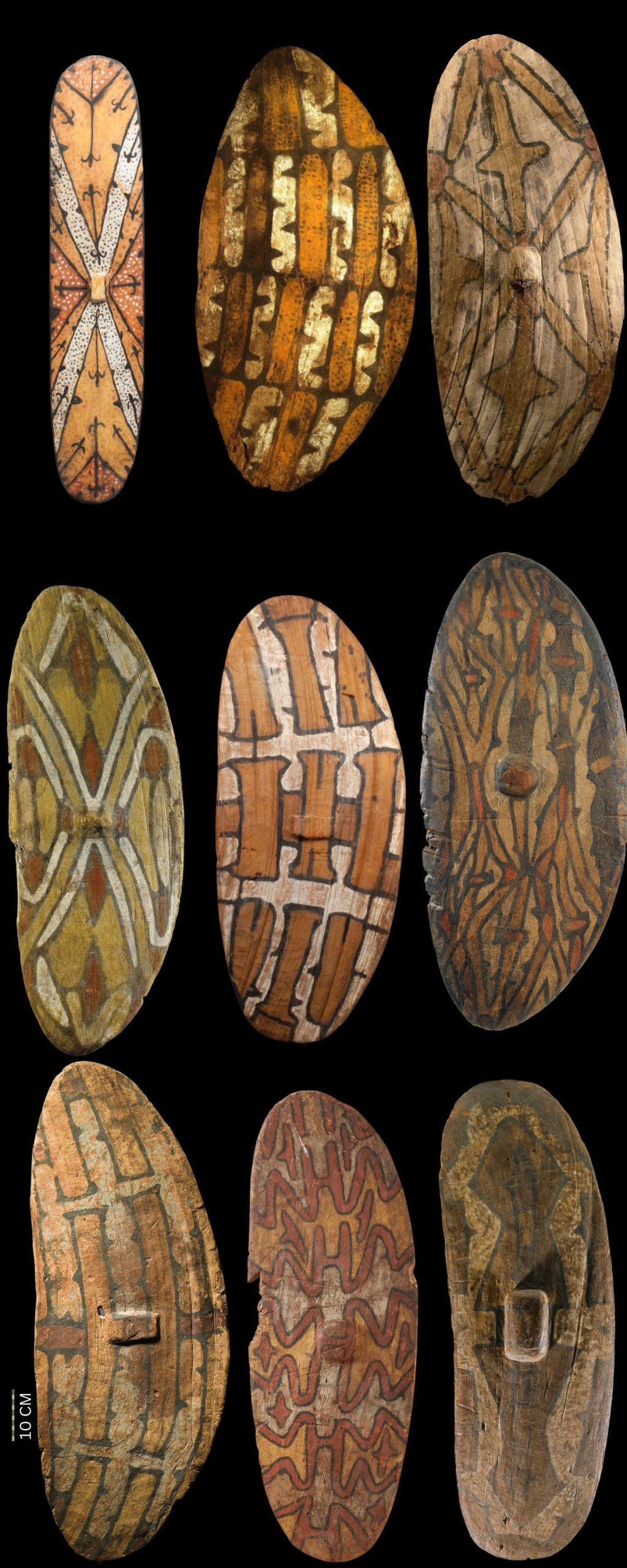
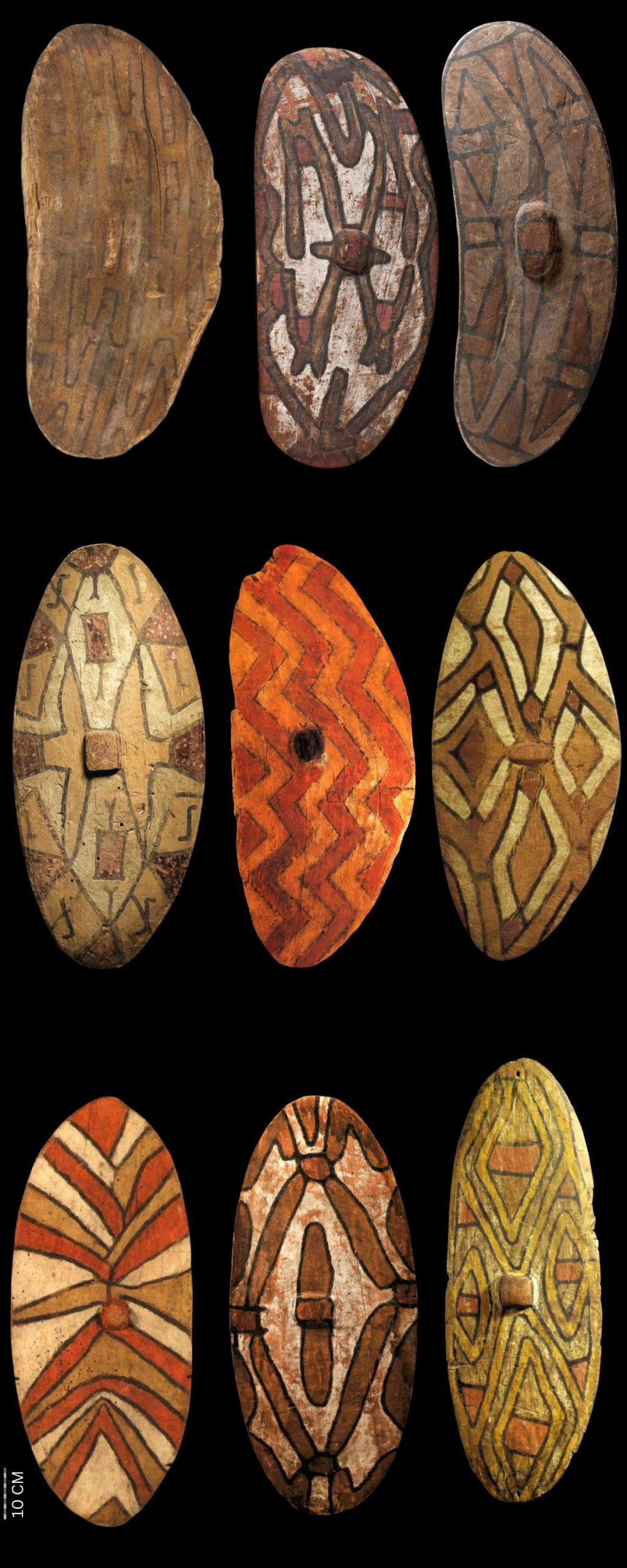
Meaning of Rainforest shield Symbology
Anthropologists and art historians have explored these designs using various analytical approaches. One common method is iconographic analysis, which looks at the motifs, composition, and colors of the designs. This analysis attempts to understand the relationship between the artwork and its geographical or social context. Another approach, semiotics, focuses on the layers of meaning embedded within the designs, emphasizing their symbolic value rather than their literal representations.
The shields, therefore, are more than artistic expressions or put more simply the meaning has been largely lost. The designs on these shields are thought to express social relationships, embodying not only the individual but also the collective identity of the community. According to anthropologist Alfred Gell, art serves as a means of changing the world, reflecting social relationships and cultural significance beyond mere symbolism.
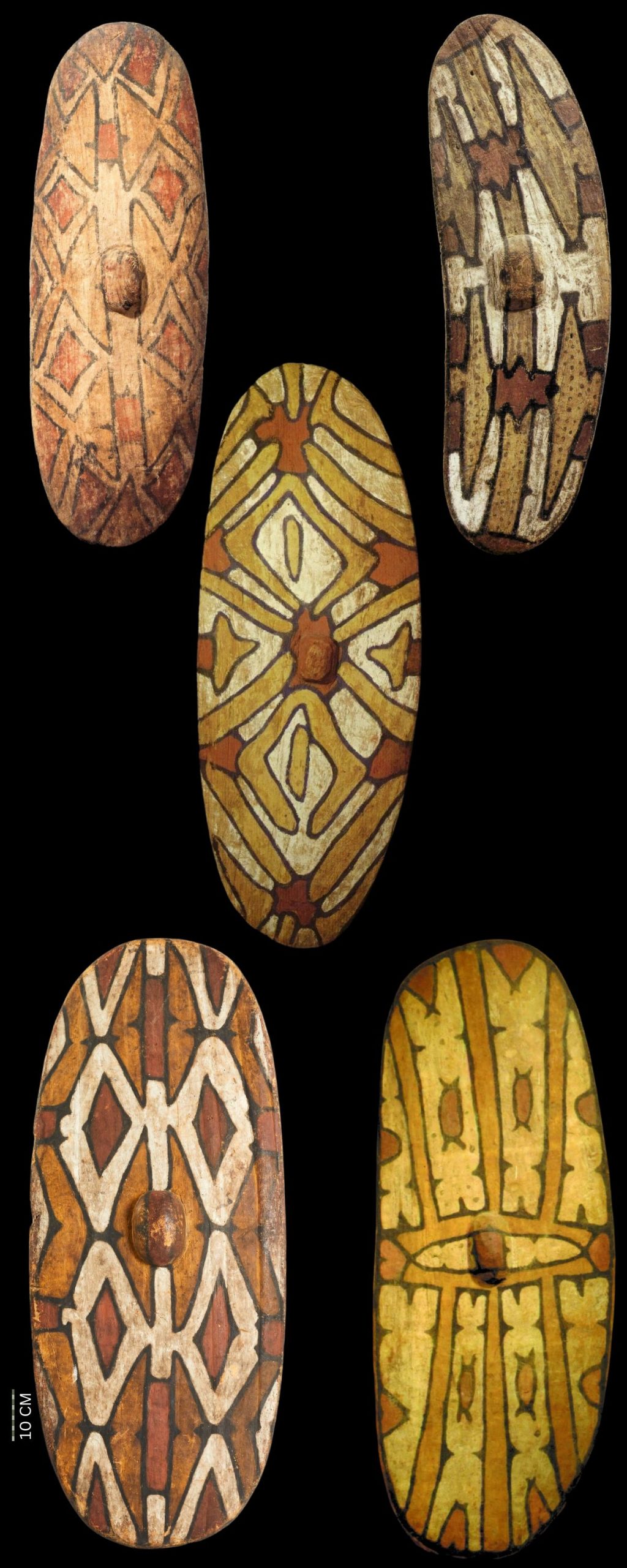
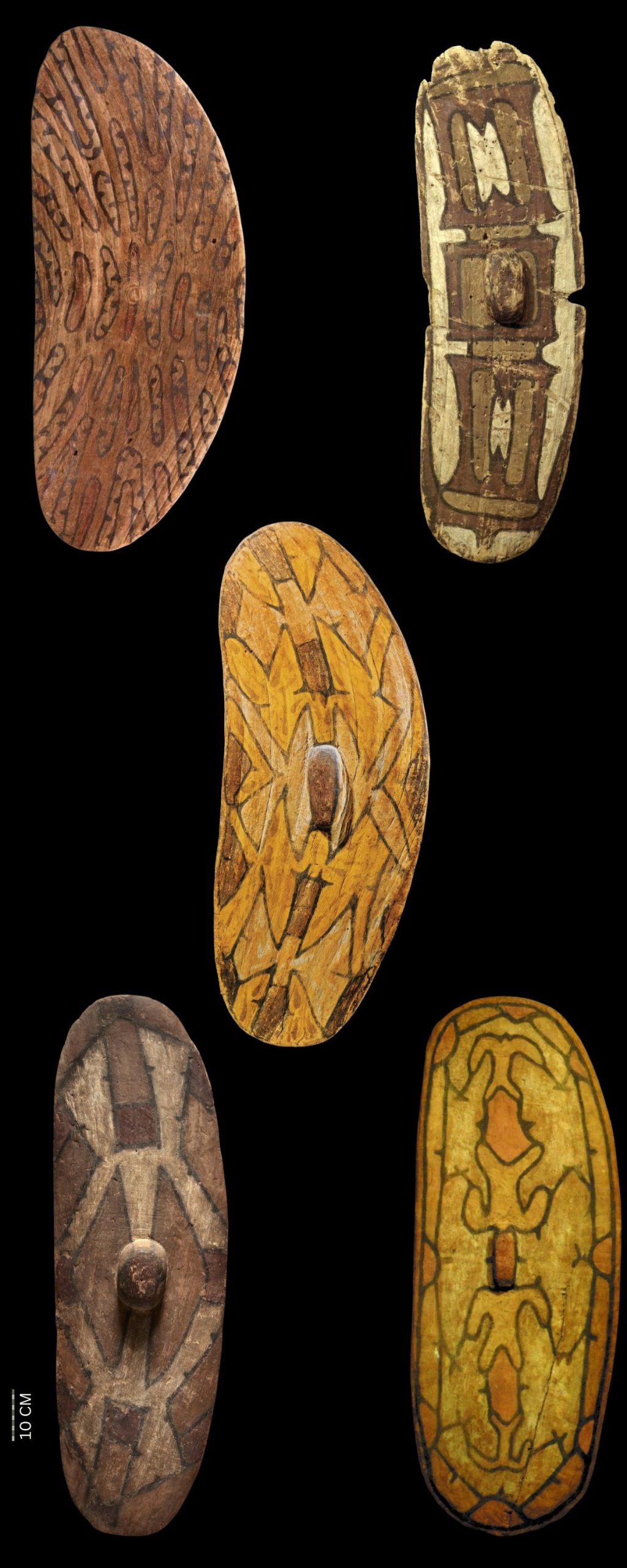
All images in this article are for educational purposes only.
This site may contain copyrighted material the use of which was not specified by the copyright owner.
Recommended reading
Painted Designs on Rainforest Aboriginal Shields from North Queensland
Rainforest Aboriginal Shields: Analysis of a Technological Style
All images in this article are for educational purposes only.
This site may contain copyrighted material the use of which was not specified by the copyright owner.
